Design thinking and engineering design is often taught as a linear, structured approach, but with Paper Mechatronics, tinkering is key. During two different July workshops a group of teachers and some young girls explored a more creative approach to learning design: blending crafts with electronics, coding, and mechanisms.
Infosys Foundation USA Pathfinders Summer Institute 2018
The Pathfinders Summer Institute 2018 attracted nearly 650 K-12 teachers and professional development instructors for a week of creative hands-on learning in computer science and making at Indiana University Bloomington, July 15-20.
At the five-day Paper Mechatronics intensive workshop, HyunJoo Oh from University of Colorado Boulder’s CraftTech Lab partnered with the Concord Consortium to work with a dozen highly motivated educators to develop progressively more complex computer-controlled paper machines. While paper is usually a two-dimensional medium, Paper Mechatronics pushes teachers to think and use materials in a three-dimensional space.
After initially using precut parts to make hand-powered mechanisms, participants used FoldMecha software to visualize the movement of parts. (FoldMecha generates a pdf file that can be used to cut parts on a laser cutter.) Participants then added motors and electronics to make fully interactive Paper Mechatronic machines.
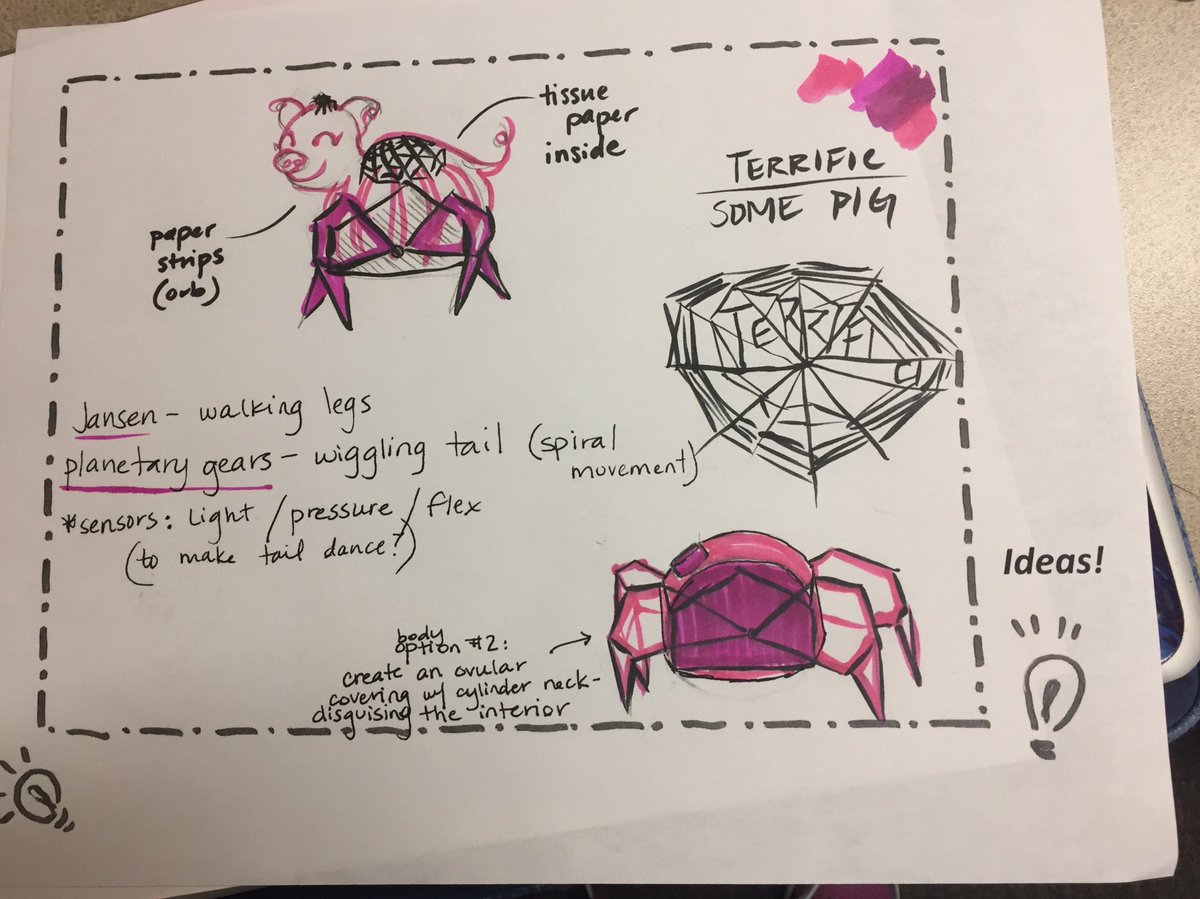
A drawing helps visualize the animated movements of You’re a Crab! storybook characters.
Participants learned how to use programmable microcontrollers and breadboards with sensors, jumper wires, and Arduino Uno controller boards in their cardboard machines, which they animated using LocoTap, a custom-designed microcontroller made by artist and engineer Abhishek Narula.
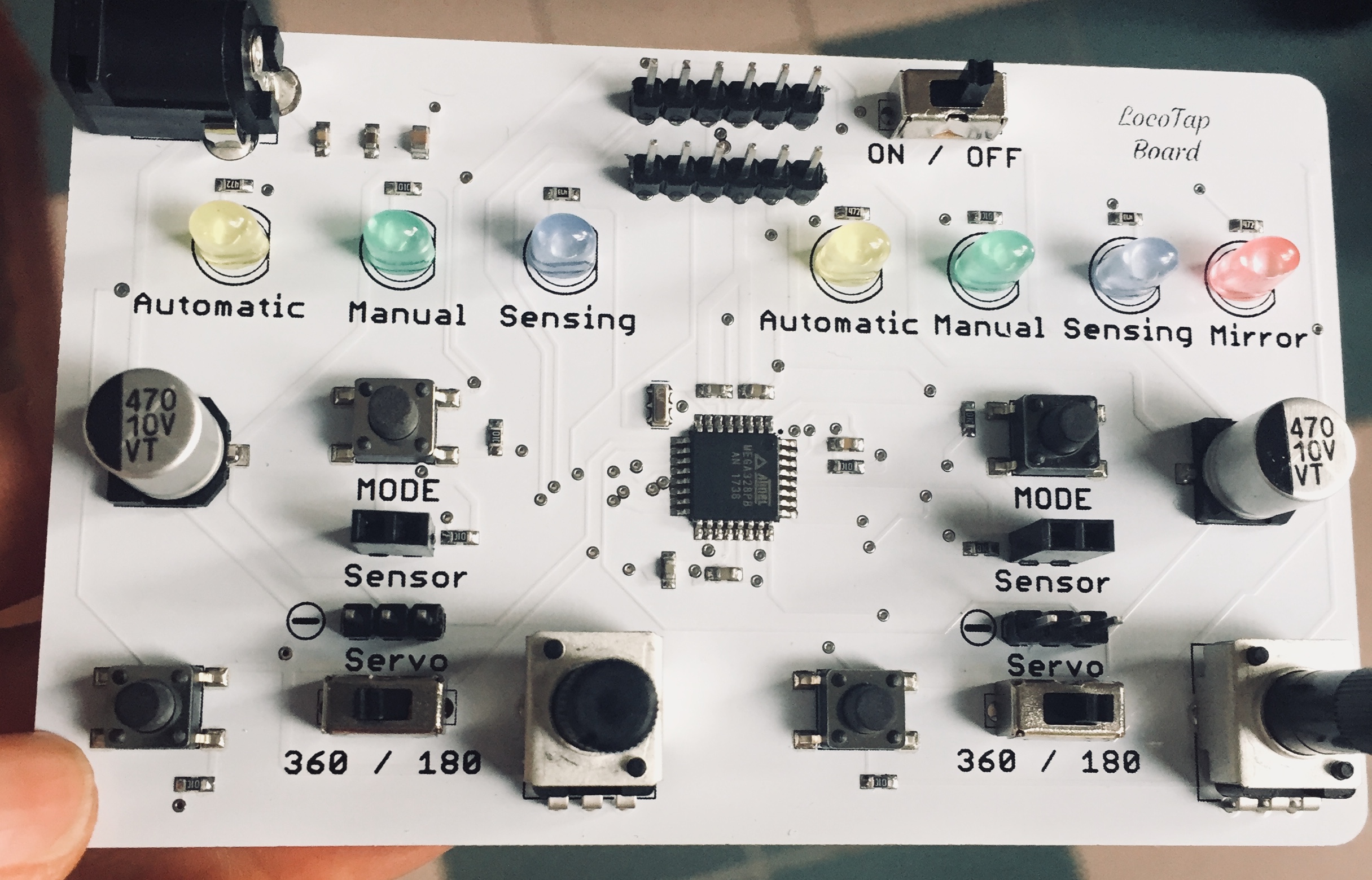
The LocoTap board designed by Abhishek Narula.
Their efforts culminated in a demonstration of ingenious storytelling, using the paper mechatronic designs to animate a favorite character. A moody crab, a dancing turkey, a curious frog, and a friendly spider were among the storybook characters who crawled, bobbed, swiveled, jumped, and swam on command.
A mechanical turkey demonstrated the chicken dance using a flex sensor to control movements. (Photo: Abhishek Narula)
All the fun served a serious purpose. Concord Consortium researchers Colin Dixon and Sherry Hsi, Co-Principal Investigator of our Paper Mechatronics National Science Foundation project, collected critical information about how teachers could use paper mechatronics to teach student-centered design in the classroom, and what resources they needed.
“The teacher workshop was fabulous. Teachers made a wide range of designs highlighting different aspects of paper mechatronics,” says Sherry. “For leveling up in programming, as a context for tinkering with mechanical parts, or as a storytelling medium, Paper Mechatronics is an important learning medium. Experiences like these develop problem-solving and collaboration skills important for lifelong learning.”
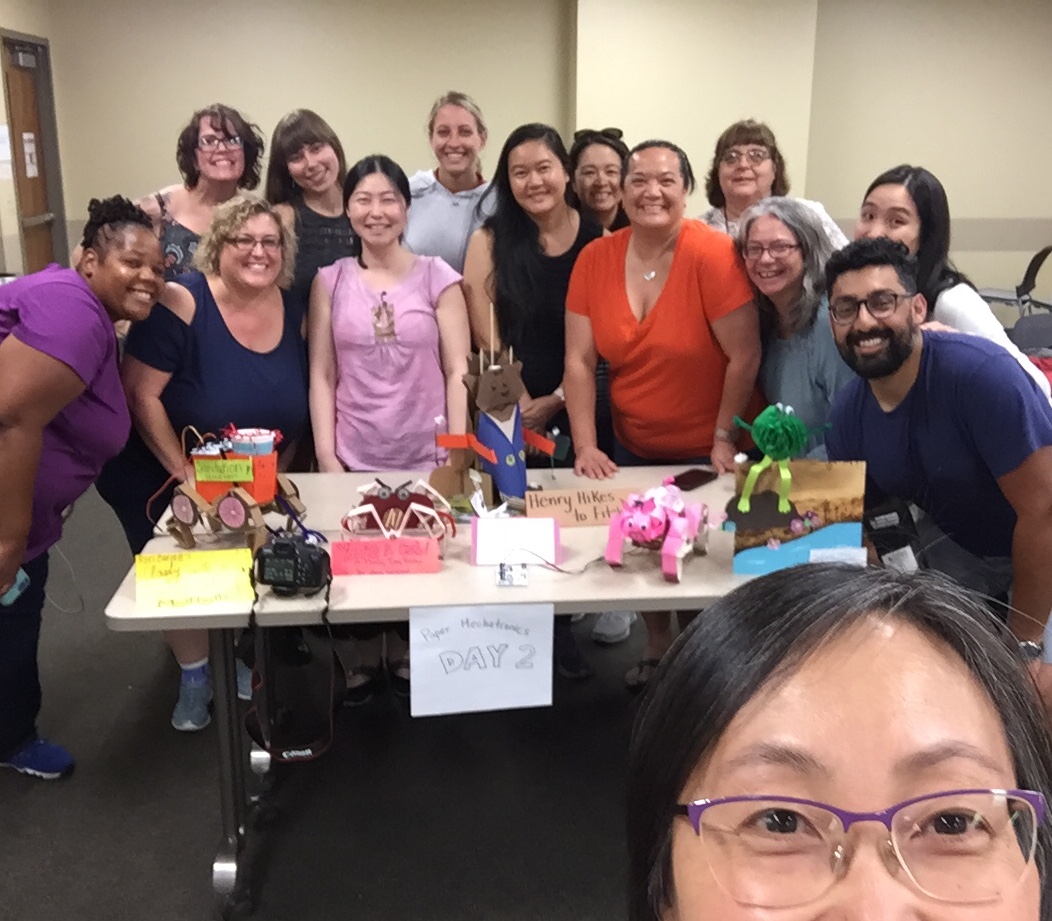
Paper Mechatronics Co-PI Sherry Hsi takes a selfie with teachers and professional development instructors in the Pathfinders 2018 Paper Mechatronics workshop.
Children’s Creativity Museum STEAM Camp for Girls
Girls aged 9-12 enjoyed a week of hands-on science, technology, engineering, art and design, and mathematics (STEAM) projects at San Francisco’s Children’s Creativity Museum, July 23-27. On July 24, in the “Fun of Flight” activity, Paper Mechatronics used real bird movement and behavior to introduce ways of making mechatronic birds.
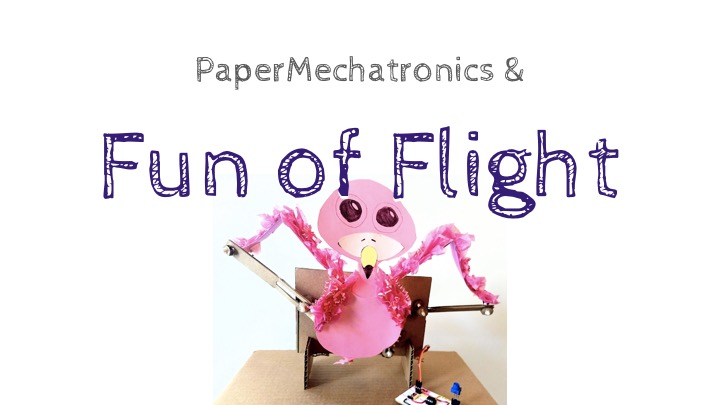
Using pre-cut cardboard and mechanical parts and mechanisms, the girls experienced first-hand the engineering design process of brainstorming, sketching, designing, building, testing, and redesigning and refining.
“The kids were really excited,” says Sherry. “It’s important for girls to be exposed to the engineering design process at an early age. It’s also good for them to experience and learn to manage the frustrations that may arise in the creative design process.”
Sketching their ideas, kids worked on how their creatures would move.
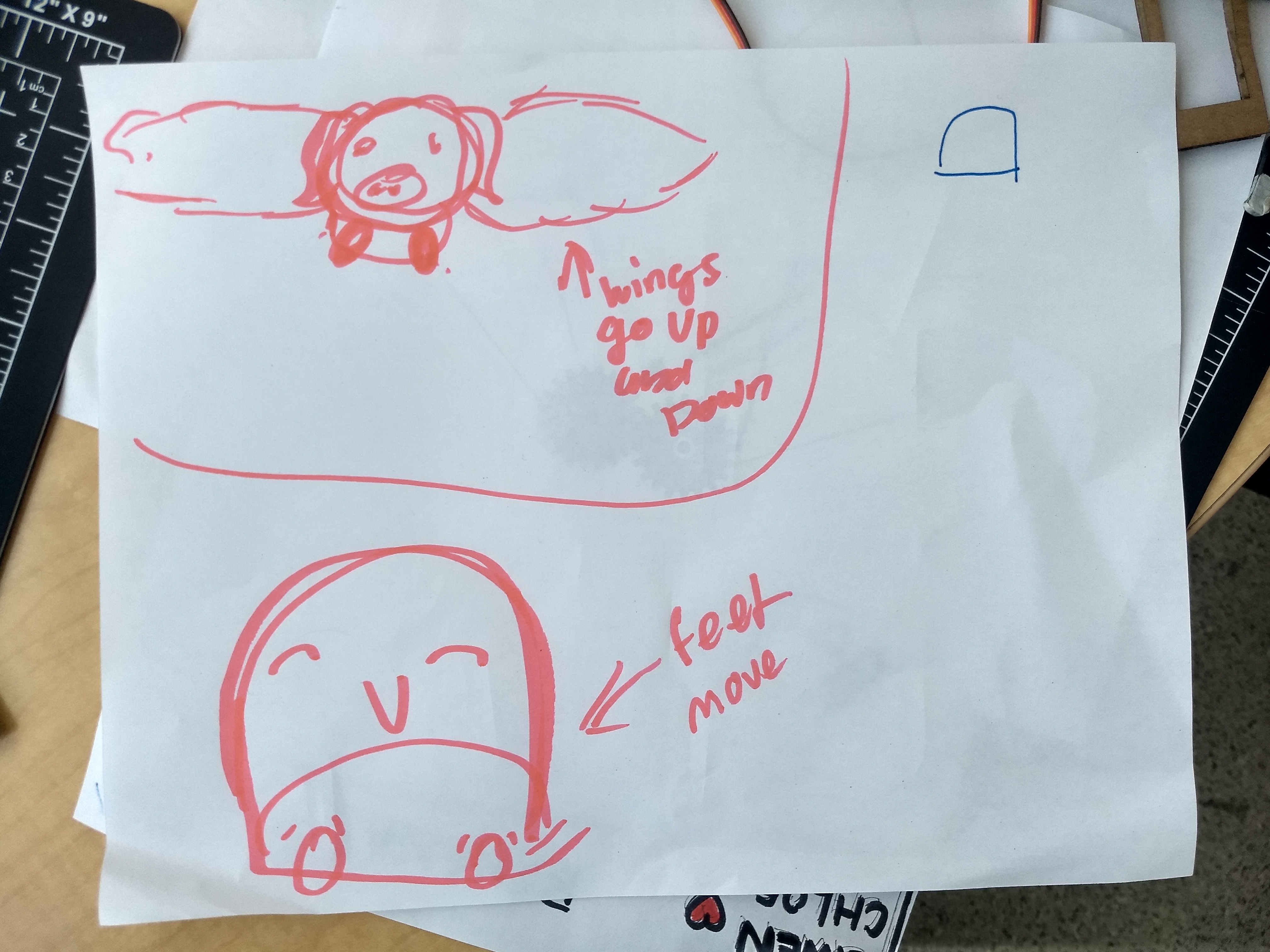
Nine budding engineers sketched ideas for an owl, a toucan, and a bat, and a cycling seal! They prototyped their movements, and then built their creations using cardboard, gears, servo mechanisms, and a LocoTap microcontroller.
“We’re exploring the boundaries of Paper Mechatronics for younger audiences,” explains Sherry. “These were the first kids to use Abhishek Narula’s custom-designed LocoTap board, and they found it fairly easy.”
All of the Paper Mechatronics creations will be displayed at the Children’s Creativity Museum.
The Paper Mechatronics project aims to study how learners expand their capabilities to engage in creative engineering and stretch their existing areas of expertise and ways of working in STEAM. “We’re really excited about how both teachers and students in these two workshops used Paper Mechatronics to work across art, electronics, and mechanics,” says Colin.